Over the last decade, Italy has had a strong stream of positional/analytical football, with the coach having a major influence on the game.
Take scudetto-winning Maurizio Sarri as a successful example of this method.
Meanwhile, the national team also won the EURO 2020 under Roberto Mancini’s positional tactics.
But football was not only like that.
Under Massimiliano Allegri’s coaching style, Juventus won the league five times in a row.
Still, he was not the type of positional coach who demanded players play in his predetermined patterns or tactics.
Instead, his football should be understood from a relationist perspective — give back the game to the players and let them initiate something on the pitch.
This tactical analysis will use Allegri’s Juventus in this season to explain how they demonstrate another type of football.
Irrational perception of space
An analytical coach’s knowledge of the sport helps them dissect the complexity of football matches with logical and rational calculation; they try to simulate reality in the training session to prepare for desired occurrences.
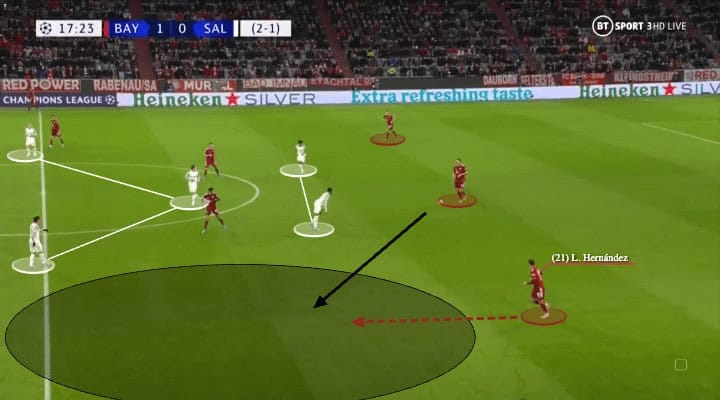
When everything has to be rational, concepts such as using numerical superiority to attack from the free space are always observed.
In the first season at Bayern, Julian Nagelsmann was more positional in his tactics.
His team kept a 3-2-5 in possession, and the purpose of the back three was to create a 3v2 overload for teams playing with two forwards, allowing the extra man to bring the ball out of the defense.
Above, we saw Lucas Hernández bringing the ball as the free player vs RB Salzburg’s 4-D-2.
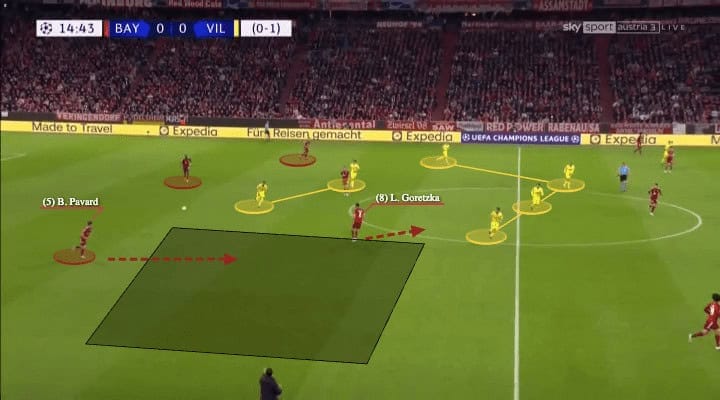
The second image shows the same against Villarreal.
This time, Dayot Upamecano spread the ball to the right side as Benjamin Pavard was the free centre-back.
Notice Leon Goretzka’s behaviour.
To respect the space of his teammate, he moves away from the ball to occupy another zone, this is the common strategy of positional teams.
“Move the ball, it looks like the players are moving, but we are moving the ball. Everyone has to be in their position”
– Pep Guardiola, 2021
As the most successful and the best coach who embraces positional football, Pep Guardiola doesn’t want players roaming about to pick up the ball — the players have to be disciplined to stay in their designated areas.
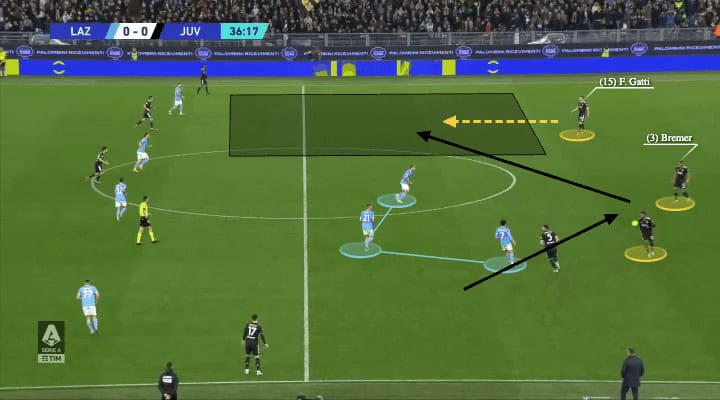
However, under Allegri, football is played differently.
They also hold some kind of back three structure with some flexibility in the side centre-back, whether that’s Alex Sandro or Danilo, but they do not always look to reproduce the same movements to bring the ball forward by using the wide space vacated.
In this scenario against Lazio, it is evident that Federico Gatti was the free player.
If they were a positional side, it would be Gleison Bremer who sent the ball to his partner, bringing the ball forward.
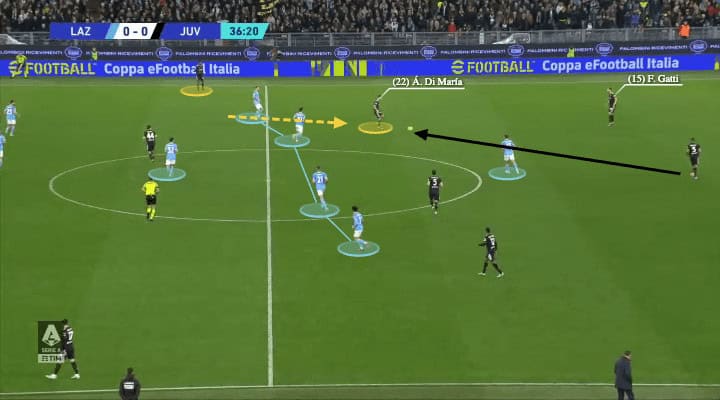
But the reality is the opposite, and instead of taking the space in front, Gatti did not go forward.
Juventus, had a forward player, Ángel Di María, drop to pick up the ball.
This is the freedom Allegri allows to his players.
The attackers would not be caged in their position.
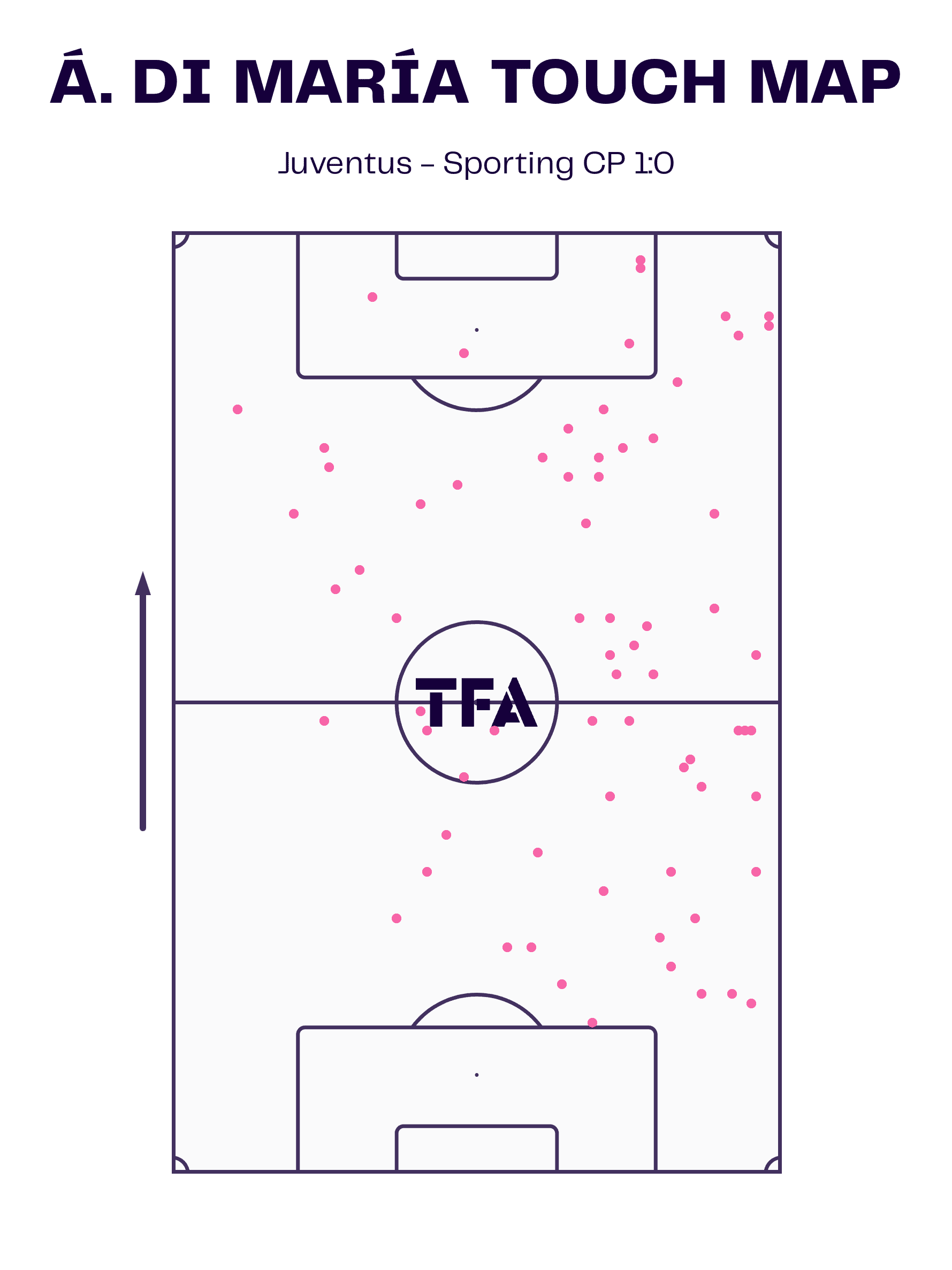
For example, as the right-winger, Ángel Di María was not given a role requiring him to stay in his position to pin an opposition defender.
The above heat map shows his touches in the home win vs Sporting CP, in which he played as the right-winger.
However, he was not caged on the side.
There were also many actions on the left or in the centre as the World Cup winner was given the freedom to roam.
Which coach did Dí María notably fall out with? That was Louis van Gaal.
A highly successful coach, but also one who has strong beliefs about positional football.
“Van Gaal was the worst coach of my career. I would score, assist, and the next day he would show me my misplaced passes. He displaced me from one day to the other, he didn’t like players being more than him”
– Dí María, 2022
Positional football is a very strong tool to help players recognise situations, but “足球是文化的載體” (in English, “football is the carrier of culture”, but the translation loses its meaning; in Spanish, it is better expressed as “El fútbol es portador de cultura”).
This means every player came from a different culture, a different language, and they had their own way of thinking, which led to their expression in the football game.
Dí María is a typical South American player who does not enjoy being caged in a position; he wants a large degree of freedom to express himself — against the fundamental principle of positional football.
Not all players can fit into positional football. It is not the only way of playing.
Dí María needs that freedom.
From toco y me voy to tabela
Thanks to Jamie Hamilton’s contribution to developing ways of dissecting relationism in football, we now have more terminology to describe the actions of the players.
This article will apply some of his terms to describe the actions of the players.
In this section, we introduce toco y me voy — pass and move in English, “I play and I go” in direct translation.
Also, the tabela, which means table or being understood as the player who bounces the ball to the teammate, but the lay-off need not be in one touch.
The tabela could hold the ball and take touches if the situation required him to do so.
Juventus demonstrated these features of relational football and the individuals that fit it.
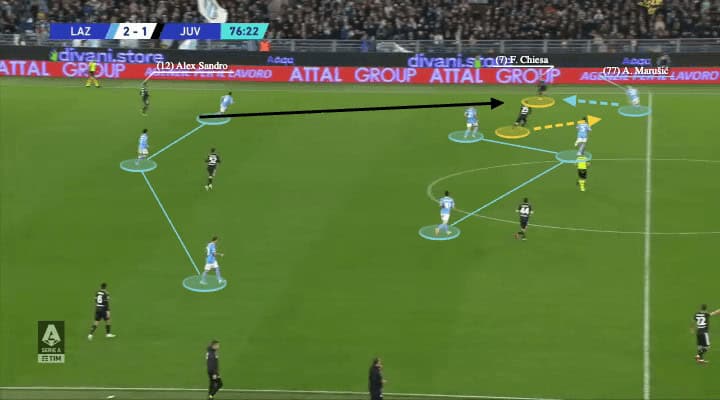
In Juventus’ ball progression during the offensive phases, they had a lot of toco y me voy actions and with tabela.
Here, we included an example of their game against Lazio.
It’s notable that Sarri’s side defended in a narrow 4-3-3 formation, with Adam Marušić closing the wide player.
Federico Chiesa was going towards the ball.
As we explained, Allegri would not hold any gripes about his offensive player roaming to pick up the ball.
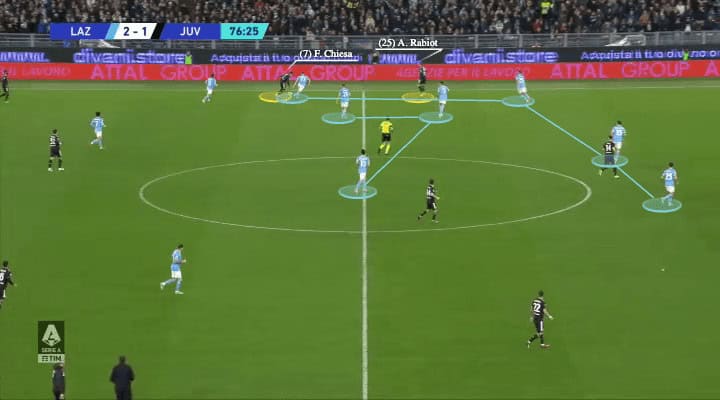
As Marušić jumped on Chiesa and left his position, Rabiot moved forward to take the space created by this sequence.
But Juventus did not get into a situation with a lot of space to attack or with a numerical superiority around the ball.
On the contrary, they were so underloaded that the two players were trapped by four opponents.
We can also observe Felipe Anderson covering spaces behind.
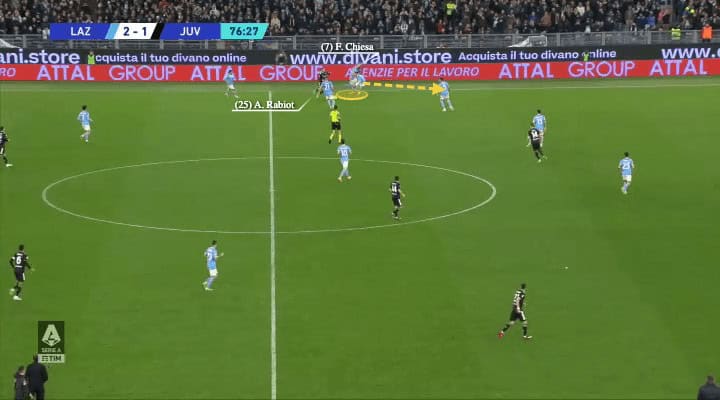
After passing the ball to Rabiot, Chiesa dashed forward into spaces behind the Lazio defence — toco y me voy.
This example demonstrates the “irrational attack” initiated by the Juventus players.
Usually, positional teams want to find free players, but in this case, Juventus has only one option.

Since Juventus are a side with good quality individuals, surprisingly, Rabiot managed to find a clean pass to release Chiesa and now Juventus are through.
Then, look at the pleasant conditions they enjoyed when they arrived in the offensive third.
It was a 4v3, because with just two players, Juventus imbalanced the opposition defence and got past four players.
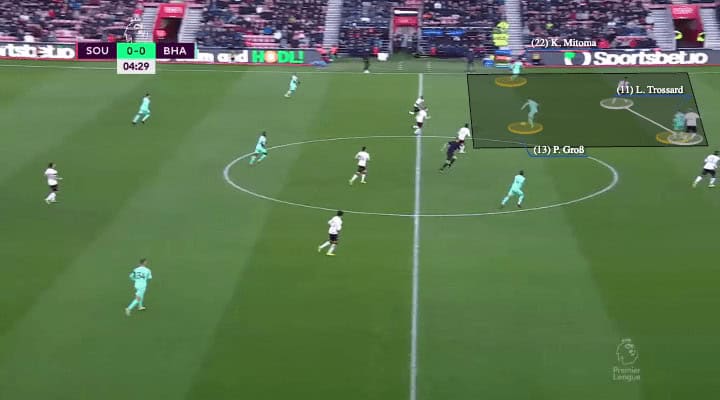
Let’s move our attention to this Brighton example.
Roberto De Zerbi’s side is very positional, so we could compare how they prefer to attack to Juventus.
With the rational occupation of spaces, they intended to create numerical superiorities.
In this scenario, they had three players (Pascal Groß, Leandro Trossard, and Kaoru Mitoma) to overload two defenders of Southampton.
From there, they could attack with combinations.
It was very rational because the side had more players than the opponents, which means a free player could be generated — and using that point to break is certainly logical.
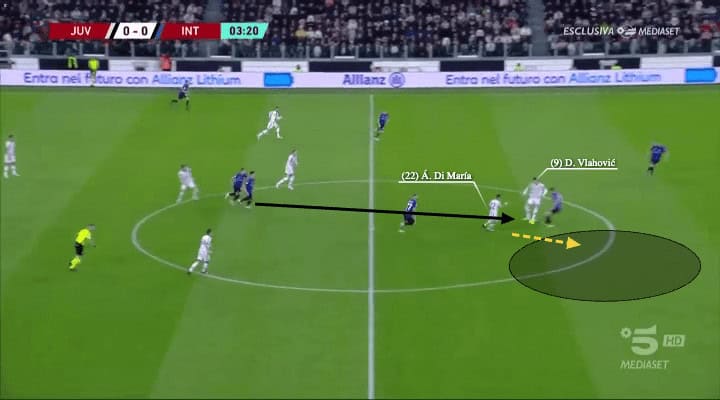
Considering the individual characteristics, Allegri also had player profiles that fit this kind of playing style.
Dušan Vlahović has been a tabela to feed other teammates in the attack, and the likes of Dí María were used to playing with toco y me voy.
In this scene against Juventus, it was exactly the two combined.
Juventus started the counterattack after winning the ball in transition.
Although it was not Dí María who started the pass, Vlahović was used as the tabela.
The Serbian forward attracted the Inter centre-back, which allowed his Argentine teammate to take the touch into the space.
Cortz luz and escadinha
In addition to toco y me voy and tabela, Juventus have also been using other relationism strategies in the possession phase; they like to use corta luz and escadinha to attack very often.
Cortz luz literally means “cut the light” in English, which is expressed as a dummy or feint of an individual player.
While escadinha usually refers to structures emerging from players’ interaction in relationist football.
It means ‘the stairs’ and manifests itself through diagonal lines of individuals connecting each other to move the ball forward.
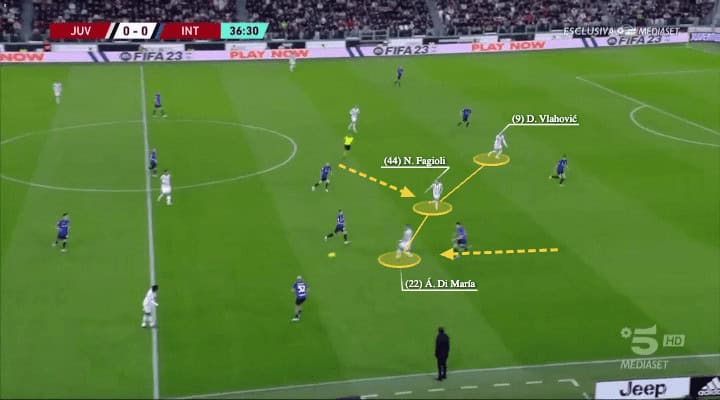
For example, the structure in this screenshot was exactly escadinha after the players made their move.
Again, Dí María dropped deep to pick up the ball, which also attracted the Inter left centre-back out.
Then, Nicolò Fagioli came across the pitch and he became the middle step of the stairs, with Vlahović on the top.
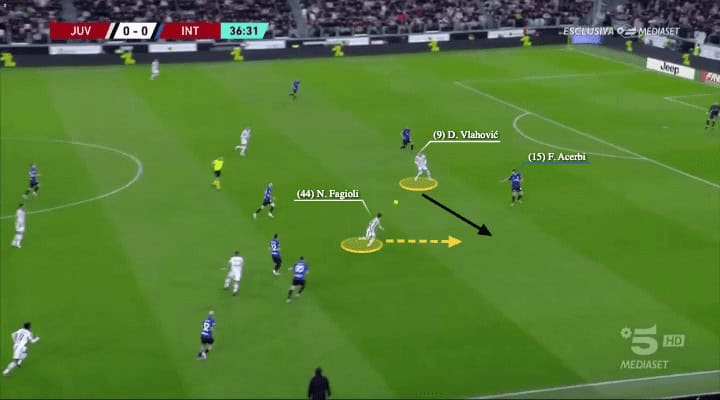
Then, they combined it with corta luz when Juan Cuadrado sent a diagonal pass in.
Fagioli knew that Vlahović was there, so he made a dummy when the ball arrived.
But the move from Fagioli itself was able to attract Francesco Acerbi’s attention, drawing the defender to protect space behind instead of closing down the Juventus striker with his teammate.
As a result, Vlahović served as the tabela to find Fagioli.
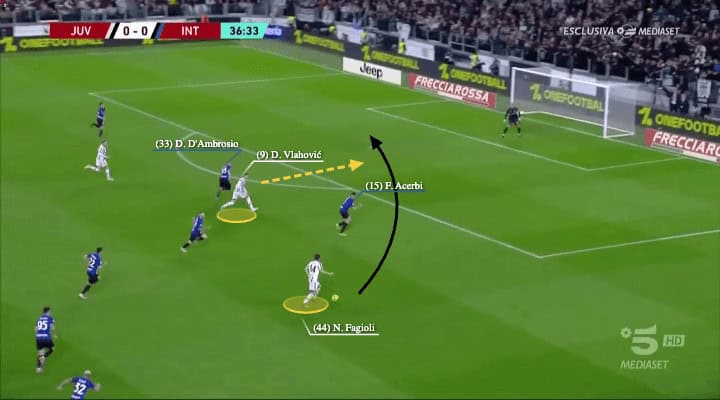
The series of movements were too quick for Inter to react, now Fagioli has free space to deliver and in the centre of the box, Vlahović enjoyed a 1v1 situation against Danilo D’Amborsio.
Relationism football once again helped Juventus reach the opposition third with decent conditions.
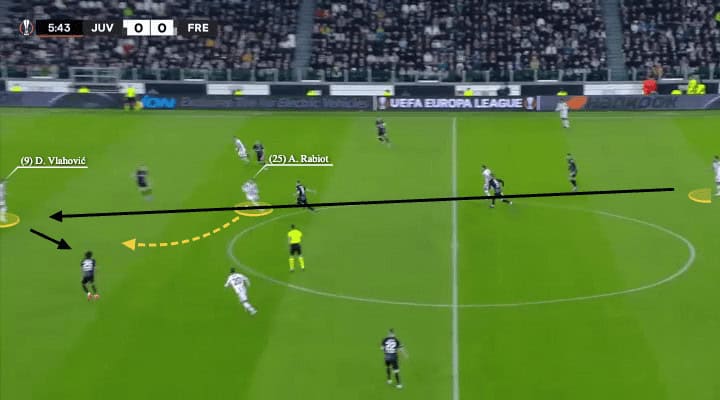
Another example here was taken from Juventus’ UEFA Europa League game with Freiburg.
As Danilo made the vertical pass that broke lines, Vlahović once again was the tabela.
Here the ball went through Rabiot, who used a corta luz.
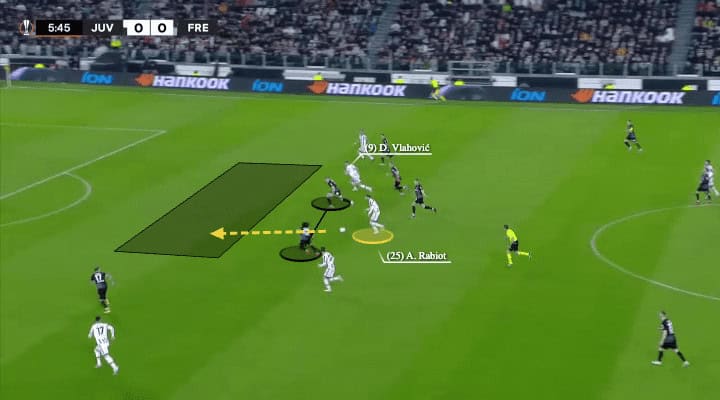
Again, as a result of Juventus’ player movements, the opponents exposed their spaces at the back.
This was a good condition as Juventus players had the ability to drive with the ball and take touches into space, which Rabiot did after receiving Vlahović’s pass.
Other perspectives
Apart from the mentioned strategies, a relationism side would also find other ways to attack, such as the defensive diagonal, tilting, and the yo-yo, but it also depends on the coach’s philosophy.
Since Allegri manager style does not seek dominance with possession, his side might not try to keep a lot of the ball, so they don’t apply some strategies.
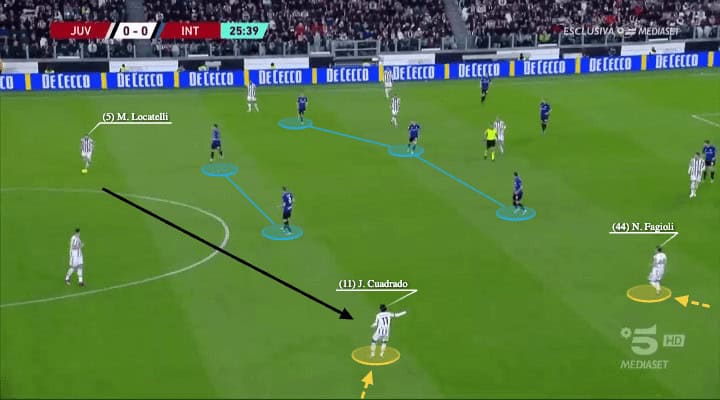
But one thing is for sure: Juventus would not restrict their wide players by using maximum width.
To them, it is not necessary to stretch the opponents or pin a defender.
This image shows Cuadrado and Dí María both going inside.
The former can be interpreted as tilting (or what the Red Bull stream refers to as “minimum width”), but it was more occasional and did not happen consistently.
Conclusion
This analysis introduces Allegri’s side as playing football in a different paradigm from another one. It shows that at the highest level of play, there was no one correct way to approach the game; it always depended on the context and the players in the squad.
They did not attack from predetermined movements but leaned more on the player’s intelligence and quality to solve the situations.
Although they might not be able to compete with the very best in Europe at this moment because of many factors, Juventus provided another lens to view football and philosophy.

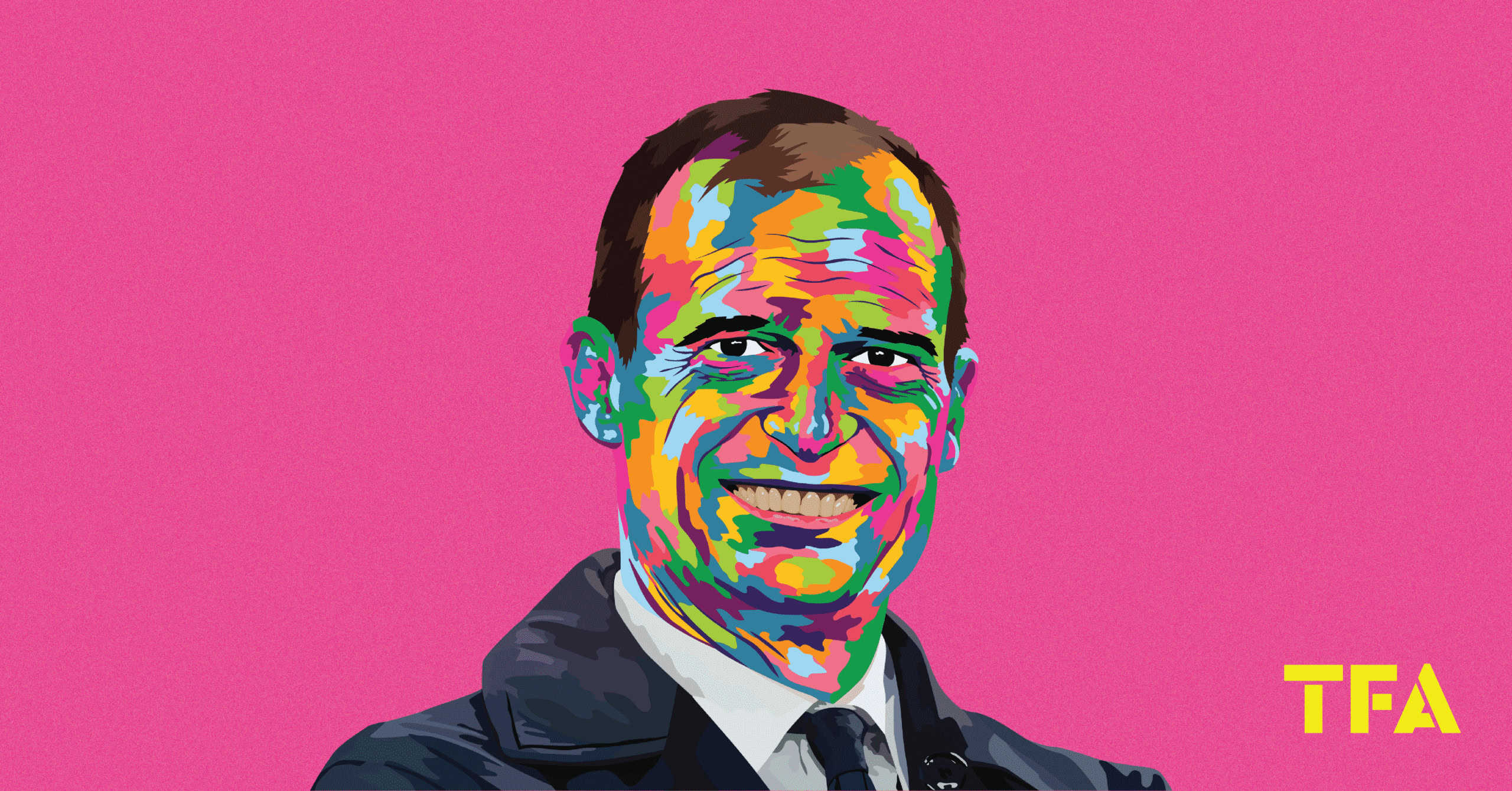



Comments